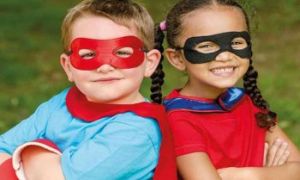

When a service operates without external cleaning staff, it’s reasonable to expect educators to maintain day-to-day hygiene. However, there’s a clear boundary between routine surface-level cleaning that supports children’s health and deep-cleaning or maintenance tasks that should be outsourced or allocated separately.
Educators and families deserve a system that mirrors real-time quality and safety—one that responds instantly to compliance breaches or serious incidents rather than waiting years for the next review. Here’s a blueprint for transforming our current “tick-and-forget” model into a living, breathing accountability framework.
Ensuring families feel informed and engaged is more than a compliance checkbox—it’s the foundation of true collaboration that supports each child’s learning journey. National Quality Standard (NQS) Element 1.3.3 requires services to keep families up-to-date about the educational program and their child’s progress. Simply saying “they had a great day” plus an end-of-year report falls short of this intent. Here’s how to enrich daily communication, meet compliance expectations, and foster home-to-service learning continuity.
Child wellbeing. It’s a phrase we use daily—but how often do we pause to ask, what does it actually mean here, in this room, for this child? Early childhood settings are shaped by diverse pedagogies, cultural frameworks, and personal experiences. Without a shared definition of well-being, services risk operating on fragmented interpretations—leaving educators navigating blurred expectations and inconsistent approaches to safeguarding, planning, and inclusion.
In many early childhood settings, we celebrate children's creativity, imagination, and emotional expression—until gendered assumptions silently step in. A boy cradling a doll may still prompt side glances, teasing, or even misguided redirection. But it's time we call out this outdated thinking and reaffirm our professional responsibility: nurturing all children’s capacity for empathy, care, and meaningful connection.
“Stay safe.”
“Stay clean.”
“Stay quiet.”
“Do it right.”
Individually, these phrases seem benign. But stacked together, they send a clear message: control comes first, curiosity second. And under that pressure, play shrinks.
Let’s be honest. Much of what limits children’s play isn’t about their needs—it’s about ours.
A recent report shared by 7NEWS Australia warns of a troubling trend: fewer Australian parents are reading to their children. While the headline sparks concern about declining literacy and emotional development, it risks overlooking a deeper reality—one that goes far beyond the bedtime book ritual.
In a world where classroom outcomes are often skewed by postcode, language background, or parental education, one early predictor quietly cuts through the noise: phoneme awareness. As Brady (2020) starkly highlights, this foundational skill outranks intelligence and socioeconomic status when forecasting reading success.
In early childhood education, minimum ratios is one of the most insidious drivers of burnout across the sector. When minimum standards become maximum limits, educators are expected to absorb overwhelming cognitive and emotional loads while maintaining composure, care, and compliance. The result? Chronic stress, professional dissonance, and rising attrition. Ratios don’t just affect supervision—they shape every moment of decision-making, relational engagement, and safeguarding. The following article provides research on the effect of ratios on educators.
In early childhood education and care, ratios are more than a technicality—they are a frontline safeguard. Every child deserves responsive supervision, emotional connection, and developmental support. Yet in Australia, the current staff-to-child ratio standards may meet regulatory requirements, but they fall short of protecting what matters most: children's safety and well-being.
 Here is the list of the EYLF Learning Outcomes that you can use as a guide or reference for your documentation and planning. The EYLF… Read More
Here is the list of the EYLF Learning Outcomes that you can use as a guide or reference for your documentation and planning. The EYLF… Read More
 The EYLF is a guide which consists of Principles, Practices and 5 main Learning Outcomes along with each of their sub outcomes, based on identity,… Read More
The EYLF is a guide which consists of Principles, Practices and 5 main Learning Outcomes along with each of their sub outcomes, based on identity,… Read More
 This is a guide on How to Write a Learning Story. It provides information on What Is A Learning Story, Writing A Learning Story, Sample… Read More
This is a guide on How to Write a Learning Story. It provides information on What Is A Learning Story, Writing A Learning Story, Sample… Read More
 One of the most important types of documentation methods that educators needs to be familiar with are “observations”. Observations are crucial for all early childhood… Read More
One of the most important types of documentation methods that educators needs to be familiar with are “observations”. Observations are crucial for all early childhood… Read More
 To support children achieve learning outcomes from the EYLF Framework, the following list gives educators examples of how to promote children's learning in each individual… Read More
To support children achieve learning outcomes from the EYLF Framework, the following list gives educators examples of how to promote children's learning in each individual… Read More
 Reflective practice is learning from everyday situations and issues and concerns that arise which form part of our daily routine while working in an early… Read More
Reflective practice is learning from everyday situations and issues and concerns that arise which form part of our daily routine while working in an early… Read More
 Within Australia, Programming and Planning is reflected and supported by the Early Years Learning Framework. Educators within early childhood settings, use the EYLF to guide… Read More
Within Australia, Programming and Planning is reflected and supported by the Early Years Learning Framework. Educators within early childhood settings, use the EYLF to guide… Read More
 When observing children, it's important that we use a range of different observation methods from running records, learning stories to photographs and work samples. Using… Read More
When observing children, it's important that we use a range of different observation methods from running records, learning stories to photographs and work samples. Using… Read More
 This is a guide for educators on what to observe under each sub learning outcome from the EYLF Framework, when a child is engaged in… Read More
This is a guide for educators on what to observe under each sub learning outcome from the EYLF Framework, when a child is engaged in… Read More
 The Early Years Learning Framework describes the curriculum as “all the interactions, experiences, activities, routines and events, planned and unplanned, that occur in an environment… Read More
The Early Years Learning Framework describes the curriculum as “all the interactions, experiences, activities, routines and events, planned and unplanned, that occur in an environment… Read More

In early childhood education, the role of the Educational Leader is both visionary and grounded...
See more...
Play provides opportunities for children to learn as they discover, create, improvise and imagine. Creative...
See more...
Remembrance Day, observed on 11 November, honours those who served and sacrificed in war and...
See more...© 2009-2025 Aussie Childcare Network Pty Ltd. All Rights Reserved.

